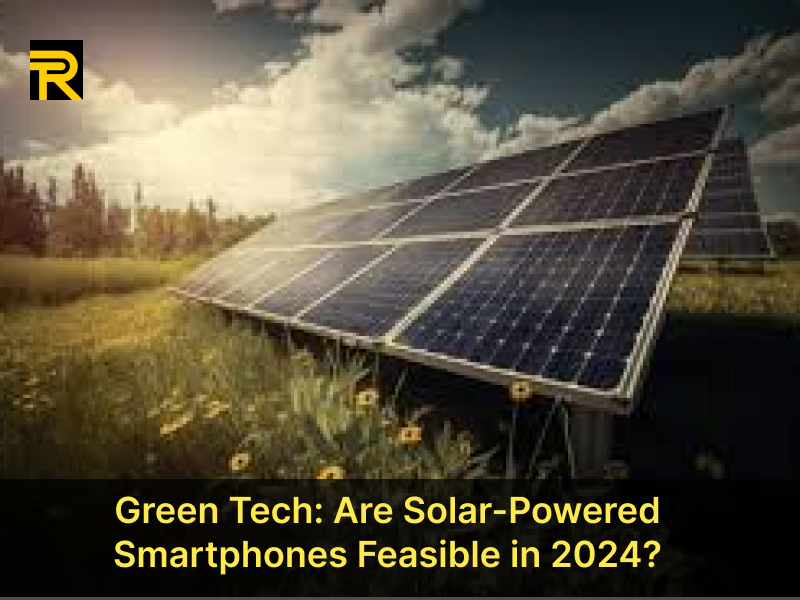
Green Tech: Are Solar-Powered Smartphones Feasible in 2024?
Green Tech: Are Solar-Powered Smartphones Feasible in 2024?
As the world shifts toward sustainable living, the tech industry is exploring innovative ways to reduce its carbon footprint. One of the most intriguing developments is the concept of solar-powered smartphones. But are they feasible in 2024? In this article, we’ll dive into the latest advancements, including solar phone charger efficiency 2024, the Light Phone 3 solar edition review, and the drawbacks of solar-powered smartphones. We’ll also explore how to DIY a solar phone charger at home, the best solar gadgets for off-grid living, and why solar phones aren’t mainstream yet. Let’s uncover the potential of this green tech revolution.
Solar Phone Charger Efficiency 2024
The efficiency of solar phone chargers has improved significantly in recent years. In 2024, modern solar chargers boast an efficiency rate of 20-25%, thanks to advancements in photovoltaic technology. These chargers are designed to harness sunlight and convert it into usable energy for your smartphone.
However, the efficiency of solar phone chargers depends on several factors, including:
-
Sunlight intensity: Direct sunlight provides the best results.
-
Panel size: Larger panels capture more energy.
-
Battery storage: Integrated batteries store energy for later use.
While solar phone charger efficiency 2024 has improved, it’s still not enough to fully power a smartphone solely through solar energy. This limitation is one of the reasons why solar-powered smartphones aren’t mainstream yet.
Light Phone 3 Solar Edition Review
The Light Phone 3 solar edition is one of the most talked-about devices in the green tech space. Designed as a minimalist phone, it features a built-in solar panel to extend battery life.
Pros:
-
Eco-friendly design: Made with sustainable materials.
-
Solar charging: Extends battery life in sunny conditions.
-
Simplified functionality: Focuses on calls, texts, and basic apps.
Cons:
-
Limited solar efficiency: The solar panel only provides a small boost to battery life.
-
Niche appeal: Not suitable for users who rely on advanced smartphone features.
The Light Phone 3 solar edition is a step in the right direction, but it highlights the challenges of integrating solar technology into mainstream smartphones.
Solar-Powered Smartphone Drawbacks
While the idea of solar-powered smartphones is appealing, there are several drawbacks to consider:
-
Limited surface area: Smartphones have small screens and bodies, leaving little room for solar panels.
-
Inconsistent sunlight: Solar charging is unreliable in cloudy or indoor environments.
-
Low energy output: Current solar technology can’t generate enough power to fully charge a smartphone.
-
Added weight and bulk: Integrating solar panels can make devices heavier and less portable.
These drawbacks explain why solar-powered smartphones are still in the experimental phase.
How to DIY Solar Phone Charger at Home
If you’re interested in harnessing solar energy for your smartphone, you can DIY a solar phone charger at home. Here’s a simple guide:
Materials Needed:
-
A small solar panel (5V output)
-
A USB charging module
-
A rechargeable battery pack
-
Basic tools (soldering iron, wires, etc.)
Steps:
-
Connect the solar panel to the USB charging module.
-
Attach the rechargeable battery pack to store energy.
-
Use the USB port to charge your smartphone.
This DIY solar phone charger is a cost-effective way to experiment with solar energy, though it’s not as efficient as commercial options.
Best Solar Gadgets for Off-Grid Living
For those embracing off-grid living, solar gadgets are a game-changer. Here are some of the best solar gadgets for off-grid living in 2024:
-
Solar-powered power banks: Portable and reliable for charging devices.
-
Solar lanterns: Provide light without electricity.
-
Solar water purifiers: Ideal for remote locations.
-
Solar backpacks: Charge your devices on the go.
These gadgets demonstrate the potential of solar technology, even if solar-powered smartphones aren’t yet viable.
Fairphone 5 Sustainability vs Samsung
When it comes to sustainability, Fairphone 5 and Samsung represent two different approaches.
-
Fairphone 5: Known for its modular design and ethical sourcing, the Fairphone 5 is a leader in sustainable smartphones. However, it doesn’t feature solar charging.
-
Samsung: While Samsung has made strides in reducing e-waste, its focus remains on mainstream features rather than solar technology.
The comparison highlights the trade-offs between sustainability and functionality in the smartphone industry.
Solar Phone Cases That Actually Work
If you’re looking for a practical way to integrate solar charging into your smartphone, consider solar phone cases that actually work. These cases feature built-in solar panels and are compatible with popular models like the iPhone and Samsung Galaxy.
Top Picks for 2024:
-
Solartab: Combines a solar panel with a power bank.
-
PocketSun: Lightweight and efficient for outdoor use.
-
SolarSleeve: Designed for iPhones, offering a sleek and functional solution.
While these cases can’t fully replace traditional chargers, they provide a convenient way to extend battery life.
Why Solar Phones Aren’t Mainstream Yet
Despite the potential of solar-powered smartphones, several factors explain why solar phones aren’t mainstream yet:
-
Technological limitations: Current solar panels aren’t efficient enough for smartphones.
-
High costs: Integrating solar technology increases production costs.
-
Consumer preferences: Most users prioritize performance and design over sustainability.
-
Market demand: The niche appeal of solar phones limits their commercial viability.
Until these challenges are addressed, solar-powered smartphones will remain a niche product.
Solar-Powered iPhone Prototype Leaks
Rumors of a solar-powered iPhone prototype have sparked excitement in the tech world. According to leaks, Apple is experimenting with transparent solar panels that could be integrated into the iPhone’s display.
While this innovation is promising, it’s still in the early stages of development. If successful, it could revolutionize the smartphone industry and pave the way for carbon-neutral smartphone brands.
Carbon-Neutral Smartphone Brands 2024
Sustainability is becoming a key focus for smartphone manufacturers. In 2024, several carbon-neutral smartphone brands are leading the charge:
-
Fairphone: Known for its ethical practices and modular design.
-
Teracube: Offers a 4-year warranty and eco-friendly materials.
-
Shiftphone: Focuses on repairability and sustainability.
These brands demonstrate that sustainability and innovation can go hand in hand.
Conclusion
The concept of solar-powered smartphones is exciting, but it’s clear that significant challenges remain. While advancements like solar phone charger efficiency 2024 and the Light Phone 3 solar edition are steps in the right direction, solar-powered smartphones aren’t yet feasible for mainstream use.
However, the growing interest in carbon-neutral smartphone brands and solar gadgets for off-grid living shows that the tech industry is committed to sustainability. As technology continues to evolve, the dream of a fully solar-powered smartphone may one day become a reality. Until then, we can embrace smaller steps, like DIY solar phone chargers and solar phone cases that actually work, to reduce our environmental impact.
Follow Us
Trending News
Newsletter
Join us to get latest News Updates



